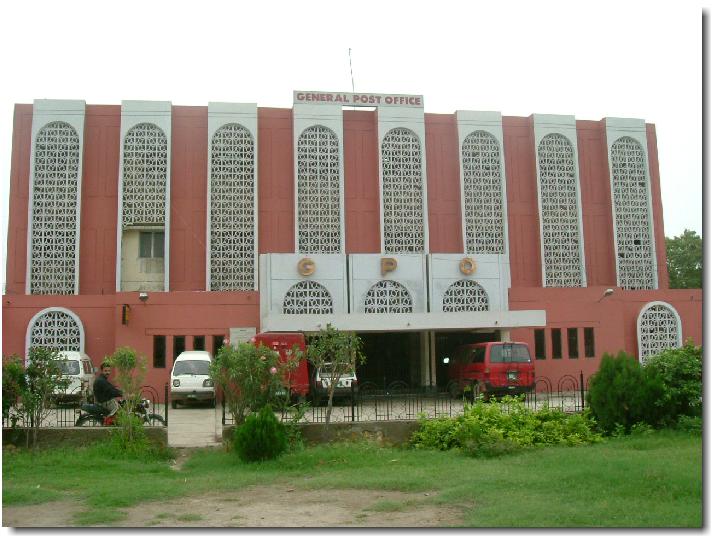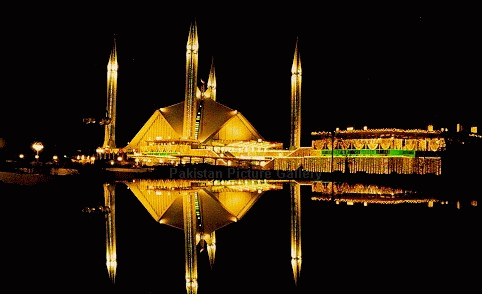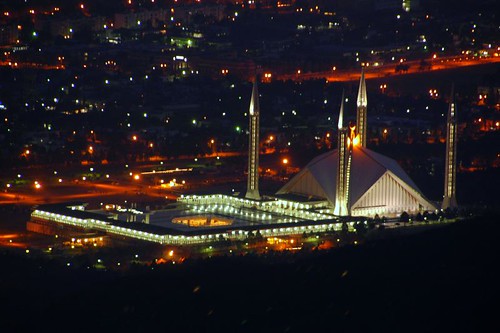Must listen English
Search Your Query

Custom Search
Tuesday, 2 November 2010
Proud Pakistani Scientist-1
Really great talented young Pakistani scientist
Must watch great achievement
Faisalabad the industrial city of Pakistan
Faisalabad (Punjabi, Urdu: فیصل آباد) is a city in the province of Punjab,Pakistan. It was formerly known as Lyallpur. Faisalabad is the third largest city in Pakistan after Karachi and Lahore. Before the foundation of the city in 1880, the area was very thinly populated. The population has risen from 9,171 in 1901 to 179,000 in 1951 and to 2,009,000 in 1998. The larger Faisalabad district had a population of about 5.4 million in 1998.
It is an important industrial centre west of Lahore. The city-district of Faisalabad is bound on the north by the districts of Hafizabad and Chiniot, on the east by Nankana sahib, on the south by Sahiwal, and Toba Tek Singh and on the west by Jhang. It is 1,135 km (705 mi) from Karachi, 128 km (80 mi) from Lahore, 350 km (220 mi) from Islamabad/Rawalpindi, 187 km (116 mi) from Burewala, and 70 km (43 mi) from Jhang.
The city is at a road and railway junction, which has played an influential role in the development of Faisalabad's trade and economy. The surrounding countryside, irrigated by the Lower Chenab River, has seen expanded production of cotton, wheat, vegetables, andfruits, which form 25% of Pakistan's exports. The city is also an industrial centre with major railway repair yards, engineering works, and mills that process sugar, flour, and oil seed. Produce includes super phosphates, cotton and silk textiles, hosiery, dyes, agricultural equipment, and ghee (clarified butter). Faisalabad is also the site of the prestigiousUniversity of Agriculture, founded in 1909.
Clock Tower of Faisalabad
Agriculture
Faisalabad district is un-parallel for its agricultural productivity. The area grew in importance as the grain belt of the Punjab. Prosperous towns and villages sprung up in the wake of colonization. The Kharif crops are maize, rice, sugarcane and bajra. The Rabi crops are wheat. barley, gram and barseen.
In addition to these, there are also Zaid Kharif and Zaid Rabi crops.Zaid Kharif crops are toria, raiya, sarsoon and Zaid Rabi crop is tobacco. The use of tractors is becoming popular and fast replacing the conventional ploughs. Improved variety of seeds, fertilizers and pesticides have greatly increased per acre yield and with that the prosperity of the peasant community which has toiled for three generations to transform a barren land into verdant fields.
Faisalabad district is famous for its fruit production also. The important fruits are Kinno. Malta, Fruiter, Mango and Guava, Faalsa is also grown. The total area under fruit orchards is 34,517 acres.

agriculture university Faisalabad

Library of agriculture university Faisalabad

PC-Hotel of Faisalabad

GPO Building of Faisalabad

Beautiful Entrance of Chenab Club

Shiblee College Faisalabad


Punjab Medical Collage Faisalabad
Beautiful places of Norther Pakistan



Beautiful place of shangrilla

Chitral River

Islamia Collage of Peshawar

Kaghan Valley

Khybar pass

Lake satpara

beautiful view of Malam


Beautiful View of Playing Polo

Saif-ul-Maluk

Great Beauty
really great voice!!!
we have to find and bring this talent at top
Faisal Mosque Islamabad
The Faisal Mosque in Islamabad is the largest mosque in Pakistan and South Asia and one of the largest mosques in the world. It was the largest mosque in the world from 1986 to 1993 when overtaken in size by the completion of the Hassan II Mosque in Casablanca,Morocco. Subsequent expansions of the Masjid al-Haram (Grand Mosque) of Mecca and the Al-Masjid al-Nabawi (Prophet's Mosque) in Medina, Saudi Arabia during the 1990s relegated Faisal Mosque to fourth place in terms of size.








Faisal Mosque is conceived as the National Mosque of Pakistan. It has a covered area of 5,000 m2 (54,000 sq ft) and has a capacity to accommodate approximately 300,000 worshippers (100,000 in its main prayer hall, courtyard and porticoes and another 200,000 in its adjoining grounds). Although its covered main prayer hall is smaller than that of the Hassan II Mosque in Casablanca (the world's third largest mosque), Faisal Mosque has the third largest capacity of accommodating worshippers in its adjoining grounds after the Masjid al-Haram (Grand Mosque) of Mecca, the Al-Masjid al-Nabawi (Prophet's Mosque) in Medina.[1]. Each of the Mosque's four minarets are 80 m (260 ft) high (the tallest minarets in South Asia) and measure 10 x 10 m in circumference.
The Faisal Mosque is named after the late King Faisal bin Abdul Aziz of Saudi Arabia, who supported and financed the project.

History:
The impetus for the mosque began in 1966 when the late King Faisal bin Abdul Aziz of Saudi Arabia supported the initiative of the Pakistani Government to build a national mosque in Islamabad during an official visit to Pakistan. In 1969, an international competition was held in which architects from 17 countries submitted 43 proposals. After four days of deliberation, Turkish architect Vedat Dalokay's design was chosen. Construction of the mosque began in 1976 by National Construction of Pakistan, led by Azim Borujerdi, and was funded by the government of Saudi Arabia, at a cost of over 130 million Saudi riyals (approximately 120 million USD today). King Faisal bin Abdul Aziz was instrumental in the funding, and both the mosque and the road leading to it were named after him after his assassination in 1975. The mosque was completed in 1986, and used to house the International Islamic University. Many conservative Muslims criticised the design at first for its non-conventional design and lack of the traditional dome structure, but virtually all criticism was eventually silenced by the mosque's scale, form, and setting against theMargalla Hills upon completion.

Design:
The Faisal Mosque is the work of famous Turkish architect, Vedat Dalokay who won the Aga Khan Architectural Award with this project. The mosque's relatively unusual design fuses contemporary lines with the more traditional look of an Arab Bedouin's tent, with its large triangular prayer hall and four minarets. However, unlike traditional masjid design, it lacks a dome. The minarets borrow their design from Turkish tradition and are thin and pencil like. The interior of this prayer hall holds a very large chandelier and its walls are decorated with mosaics and calligraphy by the famous Pakistani artist Sadequain. The mosaic pattern adorns the west wall, and has the kalimah writtern in early Kufic script, repeated in mirror image pattern.
The mosque's architecture is a departure from the long history of South Asian Islamic architecture. It is one of the most outstanding and modern Islamic architecture examples in the world.



Internal View of Mosque

wonderful view of Faisal Mosque at night
Subscribe to:
Comments (Atom)
